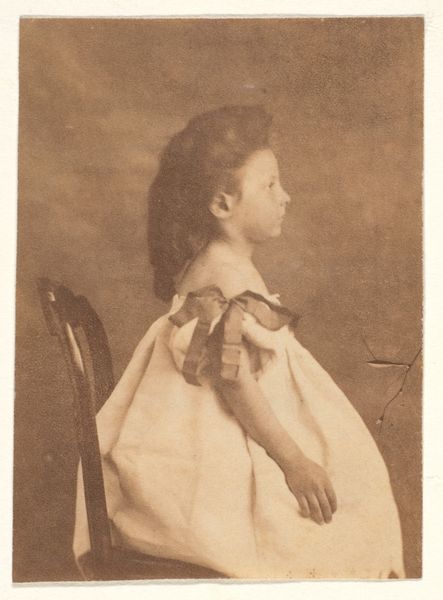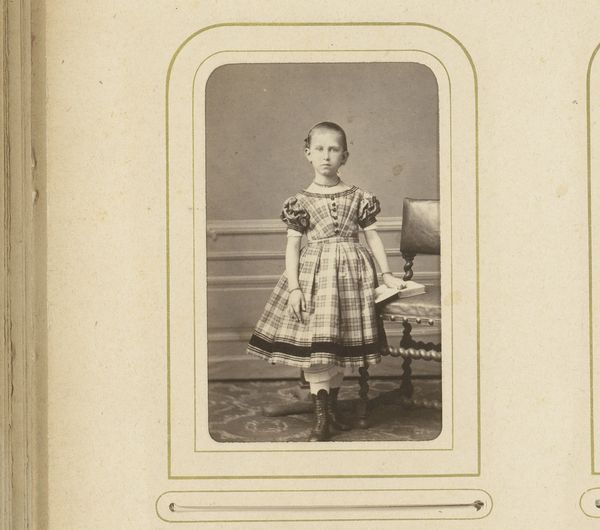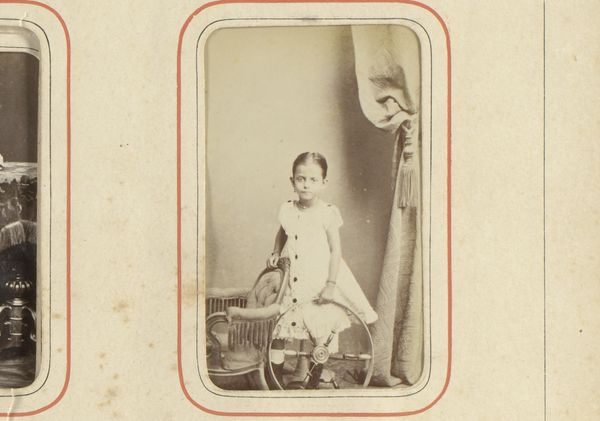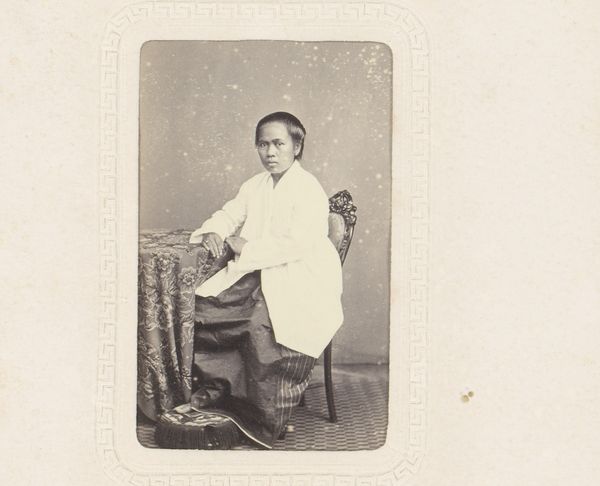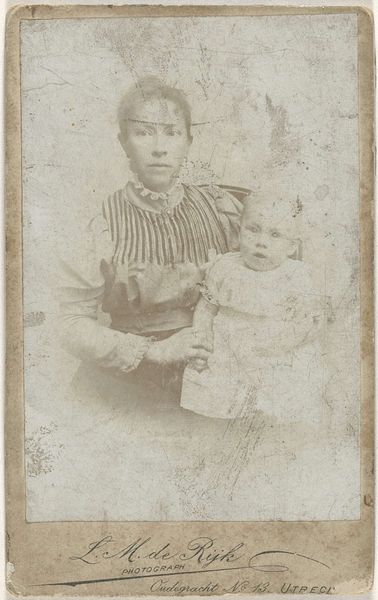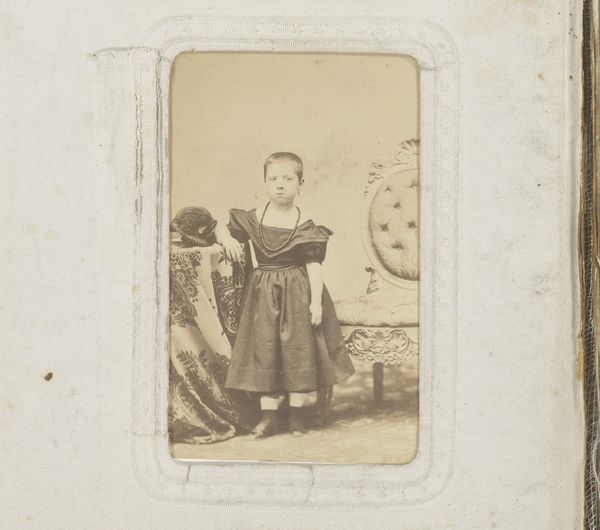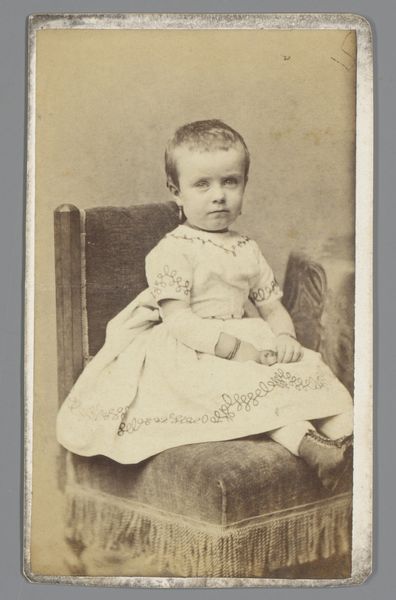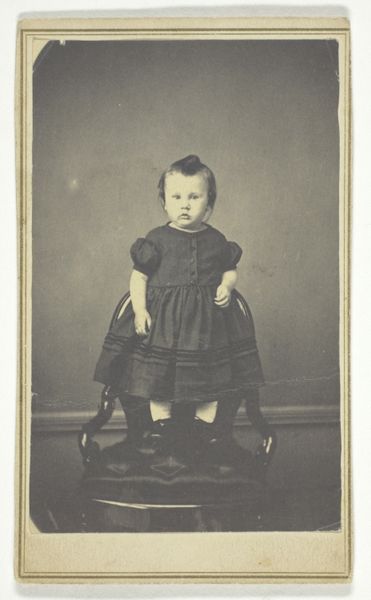
photography, gelatin-silver-print
#
portrait
#
african-art
#
photography
#
gelatin-silver-print
Dimensions: height 87 mm, width 176 mm
Copyright: Rijks Museum: Open Domain
Editor: This gelatin-silver print, titled "Portret van een zwart kind," made sometime between 1868 and 1890 by F.A. Nowell, is incredibly compelling. The doubled image, likely for a stereoscope, gives an uncanny sense of presence to the child in the portrait. What do you see in this piece, particularly considering its historical context? Curator: It's fascinating how the photograph offers a glimpse into the visual culture surrounding race in post-Civil War America. Think about the power dynamics at play: the photographer, a white man, capturing the image of a Black child in Charleston. It begs the question, what visual narratives were being constructed and consumed about African Americans at the time? What emotions are evoked in *you* as you study her visage? Editor: I’m struck by the contrast between her simple, white dress, suggesting perhaps a desire for innocence or purity, against the harsh realities of the time. Does the composition tell us more about societal views than about the child herself? Curator: Indeed, consider how innocence becomes a visual signifier, laden with cultural weight, especially when attached to a child. The photograph becomes a site where complex ideas about race, class, and identity are negotiated. We can assume that it wasn’t *just* an attempt at capturing beauty, as most family portraitures were… So, who might have bought this photograph, and *why*? What cultural values might it have affirmed or challenged for them? Editor: I hadn't thought about it that way. Now I realize the photograph offers more questions than answers, about both the sitter and the society that produced and consumed the image. Curator: Exactly! It is these open ended questions about identity and historical memory which unlock art's enduring and emotional appeal.
Comments
No comments
Be the first to comment and join the conversation on the ultimate creative platform.

